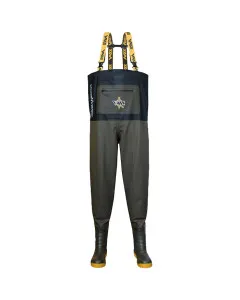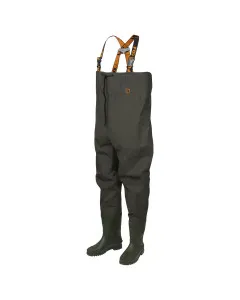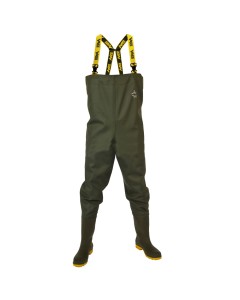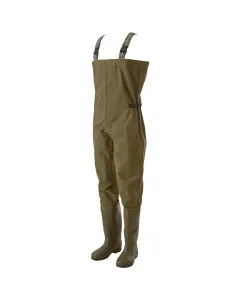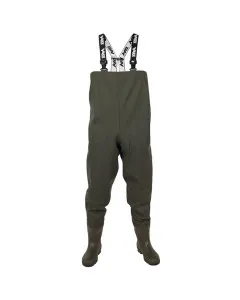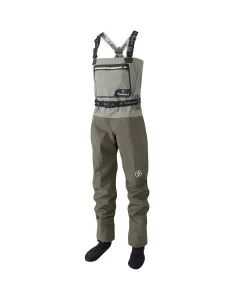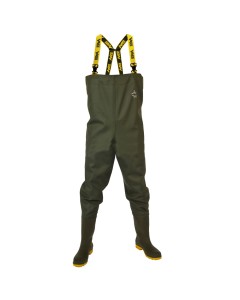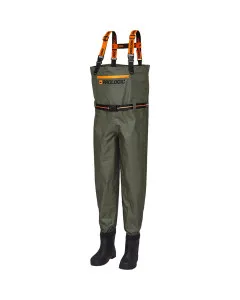An Angler's Guide to Buying Fishing Waders
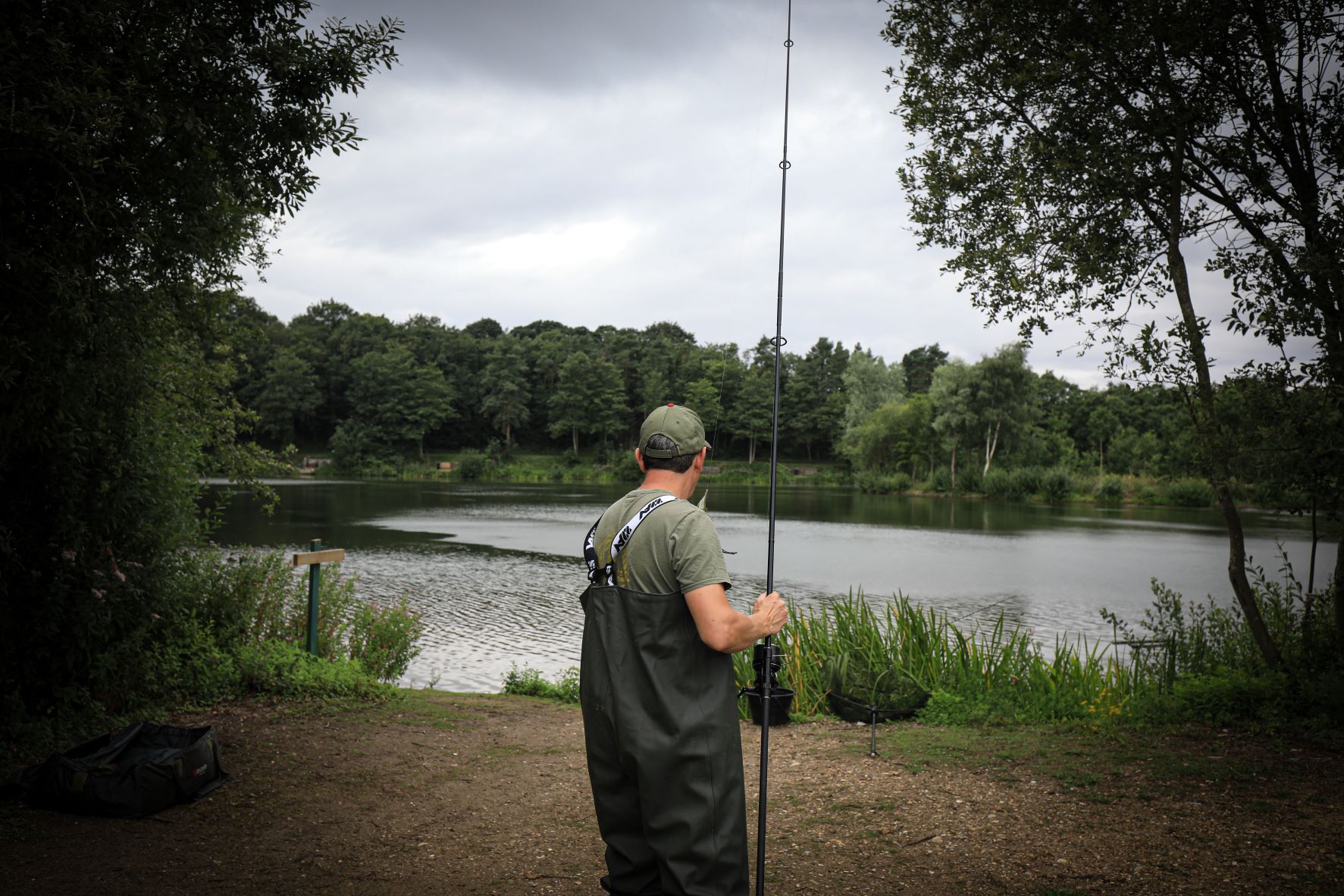
Looking to purchase a set of waders? You’ve come to the right place. The following paragraphs function as a complete guide to waders, whether you're a seasoned veteran of the banks or a novice.
A quality pair of waders offers you both warmth and comfort, but also access. Access to swims you wouldn’t be able to fish from the shore at a whole host of venues; rivers, vast reservoirs, commercial lakes or your local syndicate. It also allows you to capture and release bigger fish safely, keeping the bigger specimens in the water as much as possible is always a good idea and a set of waders permits you do just that without getting wet.
The following paragraphs cover all the different styles of waders, the materials used from suspender to sole and some care tips to ensure you get the most out of your waders.
To answer the question - which waders to buy? - we first need to address all the different wader styles and designs.
Types of Waders
There are three main wader variants; hip or thigh, waist and chest – no prizes for guessing what these refer to – nonetheless there are circumstances in which you would benefit from having a certain style of wader.
All waders on Angling Direct shelves are high-quality, but like any other tackle item, they all have their pros and cons.
Thigh Waders
Thigh waders – sometimes referred to as hip waders – are the smallest and shortest off all wader styles, as the name suggests they waterproof your body up to the thigh area and are best used in knee-height water.
Thigh waders are compiled of two separate pieces, one for each leg, a brace then secures the waders around your belt to hold them up.
Being the smallest of all waders, thigh waders are, naturally, the lightest of all waders and as a result the easiest to transport, they are also the most comfortable choice in warm weather.
Thigh waders are ideal for a situation where you are going to be in relatively shallow water, for example, when launching a boat or wading into the margins to net a fish.
Waist-High Waders
Waist waders are the closest style to conventional trousers, and feature belt loops to hold them up, just like your jeans. Waist-high waders are ideal for water up to mid-thigh depth, its always a good idea to over compensate for depth, leaving 6-8 inches of wader dry, decreasing the chance of you tipping your waders, a quick inundation of cold water will soon ruin your day, or at least make it uncomfortable.
The benefits of waist waders are obvious, they offer more protection than a set of thigh waders, but without being as constricting as chest waders. Being trouser-like in design they are also probably the most comfortable.
Chest Waders
Chest waders offer you the most protection, keeping you dry up to the midriff area, ideal when facing fast flowing water or unexpected waves.
Its also worth noting that wearing a wading belt with chest waders is advantageous in case you do manage to tip your waders, meaning worst case scenario your torso gets wet but your legs remain dry.
The one disadvantage to chest waders is it can get warm! During the summer months you wont want to be sweating it out in your waders all day, but the advantages of having almost full-body protection outweighs the one disadvantage – in the winter months it wont even be an issue.
Wader Construction
Wader material can be grouped into two categories, breathable and non-breathable.
Insulated waders are usually made from neoprene. Neoprene is waterproof, stretchy and durable, making it perfect for waders, however, it can get very warm as any perspiration is trapped inside. Thicker Neoprene of 7mm or more can also be buoyant, making your life difficult in deeper, fast flowing water.
Breathable waders are naturally lighter and will obviously allow moisture to escape, hence the name. Common materials include nylon and polyester topped with a hydrophobic membrane such as Gore-Tex.
Unlike Neoprene waders, uninsulated waders do not become buoyant and as a result are preferred for situations when you find yourself in deeper water.
Wader Soles
The soles of your waders is more important than you would imagine, there are for main types of soles; felt, rubber, hiking and studded.
Felt soles are best for traversing rock-covered riverbeds, offering superb traction in these conditions. However, felt soles are not as common as rubber soles and may need to be purchased as a separate boot.
Rubber soles are the easiest to clean and best for wading through boggy mud, but they could let you down on a slippery rock surface.
Hiking soles are, as the name suggests, are for anglers who cover a lot of ground whilst fishing. Being designed for long-distance they are also the most comfortable sole to wear with your waders.
Studded soles offer superior traction on algae-covered rock beds, for situations where a regular felt sole is not quite enough, studs offer greater stability, but cannot be trusted in mud. Its also worth noting the studded soles will damage the deck of your boat if you like to fish from one.
Other Features to Lookout for
Wader belts - In case you do manage to tip your waders, a wader belt will ensure that only the torso section of your waders becomes inundated with water.
Gravel guards – Essentially sleeves on the ankle cuff of your waders, preventing gravel and dirt from entering your wading boots.
Pockets – Welded storage pockets help keep key items to hand and protect them from water. Handwarmer pockets do exactly what they say on the tin.
Cordlocks – Like belt loops the cordlock helps to ensure the waders are a snug fit for you.
Reinforced knees – Further material on the knee increases the longevity of your waders.
Brands
There are several manufacturers that produce waders, from Vass whose waders are instantly recognisable thanks to the notorious bright yellow suspenders. Daiwa - Yes, they seem to be good at everything - offer waders in all styles, the Daiwa Hybrid chest waders offer Neoprene legs and a breathable torso material.
When it comes to angling clothing, fishing waders are among the most essential products in an angler’s wardrobe. We anglers spend all our time at the water’s edge, so it follows to reason that we might have to get our feet wet from time to time.
With Angling Direct’s collection of waterproof fishing waders for sale, you don’t have to worry about taking the plunge; whether you’re after a pair of waist waders to slip over your trousers at a moment’s notice or you’re going to be stood chest-deep and need some neoprene, rubber chest waders.
Looking to purchase a set of waders? You’ve come to the right place. The following paragraphs function as a complete guide to waders, whether you're a seasoned veteran of the banks or a novice. The following paragraphs cover all the different styles of waders, the materials used from suspender to sole and some care tips to ensure you get the most out of your waders.
What are Fishing Waders?
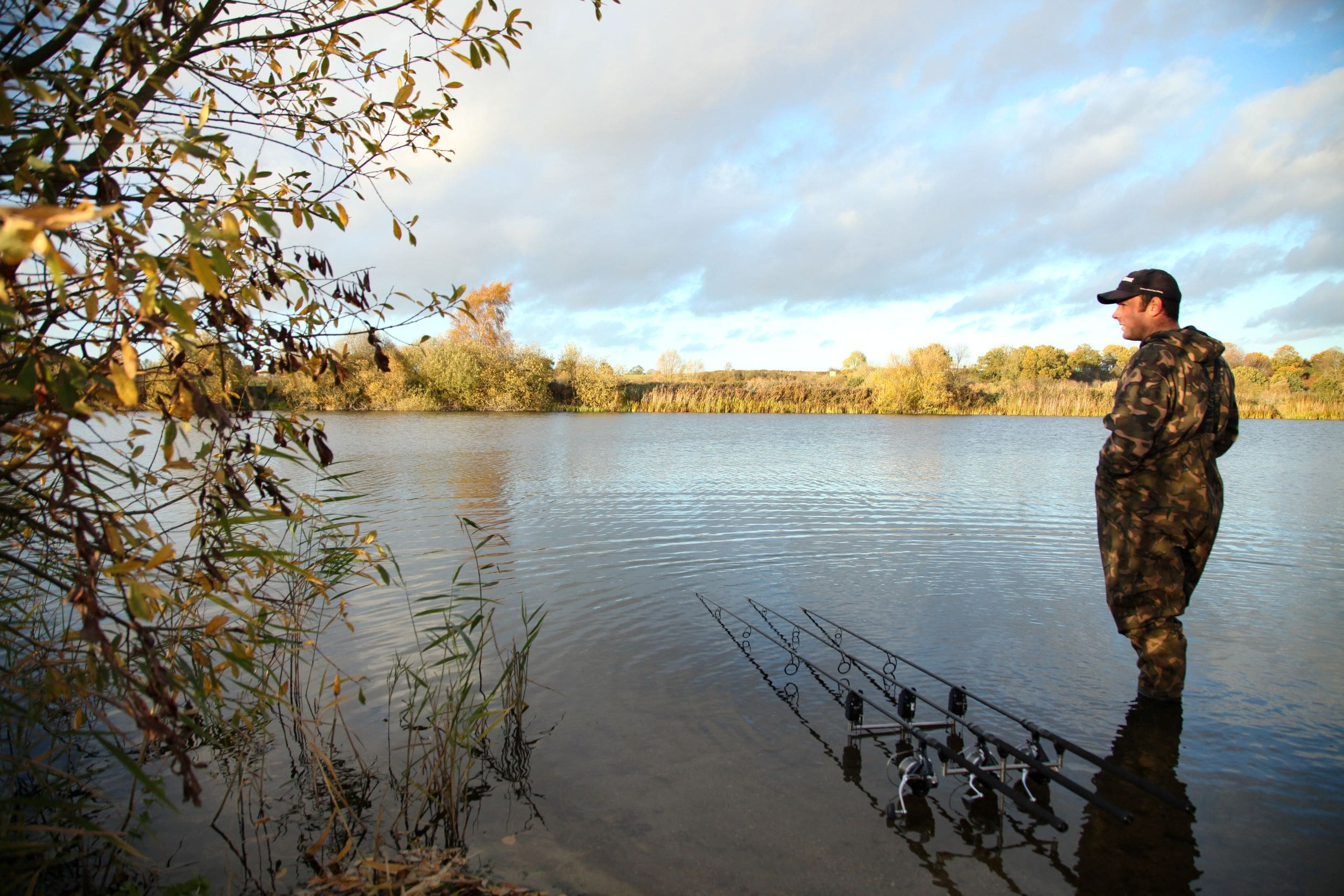

Waders are one of the most useful editions to an angler’s wardrobe and they can make a world of difference to your bankside success. Whether wading boots, waist waders, wading trousers or a whole wading suit, you can choose something waterproof to keep you dry when in the bank. They tend to slip on over your choice of trousers and socks and include boots so that your ankles also stay dry!
Why Do I Need Fishing Waders?
A quality pair of waders offer you both warmth and comfort, but also access. Access to swims you wouldn’t be able to fish from the shore at a whole host of venues; rivers, vast reservoirs, commercial lakes or your local syndicate. It also allows you to capture and release bigger fish safely, keeping the bigger specimens in the water as much as possible is always a good idea and a set of waders permits you to do just that without getting wet.
The climate and conditions of Britain are not always the warmest and so many of the waist waders are suited to the UK's cooler waters with its wealth of insulation, likewise, there are many wading boots that are in the UK pertinent.
Our collection of fishing waders really is extensive. Whether you’re looking for a simple pair of emergency thigh waders or the latest technological advances in breathable chest waders for your fly-fishing excursions, you’ll find the very best right here under one roof.
Types of Fishing Waders
To answer the question - which waders to buy? - we first need to address all the different wader styles and designs.
There are three main wader variants; hip or thigh, waist and chest – no prizes for guessing what these refer to – nonetheless, there are circumstances in which you would benefit from having a certain style of wader. All waders on Angling Direct shelves are high-quality, but like any other tackle item, they all have pros and cons.
Thigh Waders
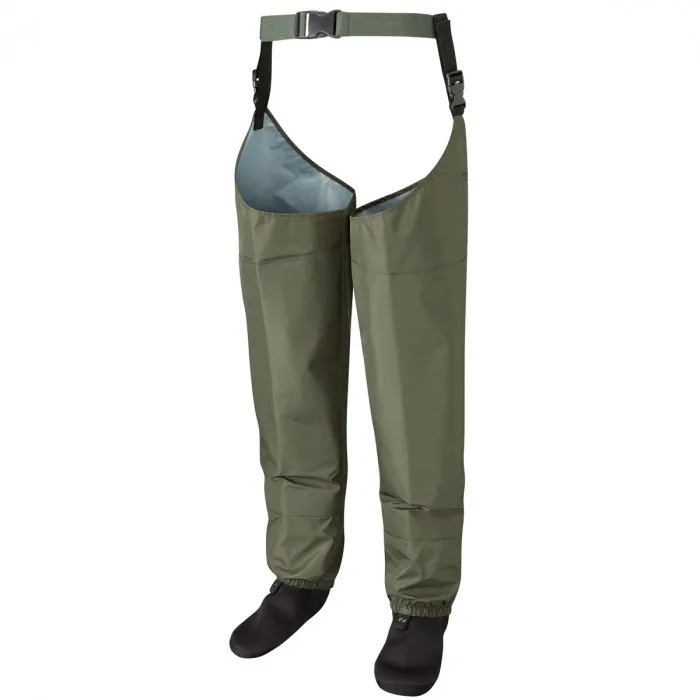

Sometimes referred to as hip waders, thigh waders are the smallest and shortest of all wader styles, as the name suggests they waterproof your body up to the thigh area and are best used in knee-height water. Thigh waders are compiled of two separate pieces, one for each leg, a brace then secures the waders around your belt to hold them up.
Being the smallest of all waders, thigh waders are, naturally, the lightest of all waders and as a result the easiest to transport, they are also the most comfortable choice in warm weather.
Thigh waders are ideal for a situation where you are going to be in relatively shallow water, for example, when launching a boat or wading into the margins to net a fish.
Waist-High Waders
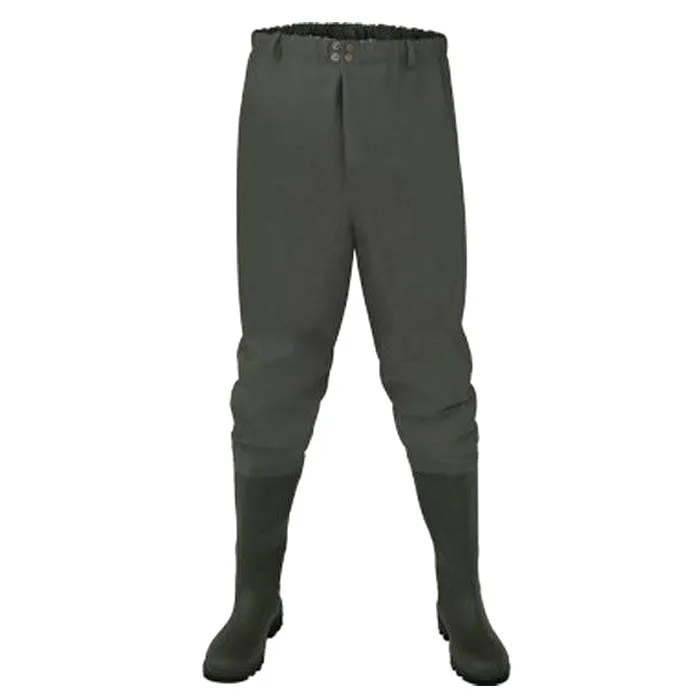

Waist waders are the closest style to conventional trousers, and feature belt loops to hold them up, just like your jeans.
Waist-high waders are ideal for water up to mid-thigh depth, its always a good idea to overcompensate for depth, leaving 6-8 inches of wader dry, decreasing the chance of you tipping your waders, a quick inundation of cold water will soon ruin your day, or at least make it uncomfortable.
The benefits of waist waders are obvious, they offer more protection than a set of thigh waders, but without being as constricting as chest waders. Being trouser-like in design they are also probably the most comfortable.
Chest Waders


Chest waders offer you the most protection, keeping you dry up to the midriff area, ideal when facing fast-flowing water or unexpected waves.
It's also worth noting that wearing a wading belt with chest waders is advantageous in case you do manage to tip your waders, meaning worst-case scenario your torso gets wet but your legs remain dry.
The one disadvantage to chest waders is they can get warm! During the summer months you won't want to be sweating it out in your waders all day, but the advantages of having almost full-body protection outweigh the one disadvantage – in the winter months it won't even be an issue.
What Do I Need in A Pair of Fishing Waders?
It is not just the type of fishing waders you need to consider when looking to buy a pair, but the key features. The material, construction and soles are all features to consider and we are about to go into more detail as to why.
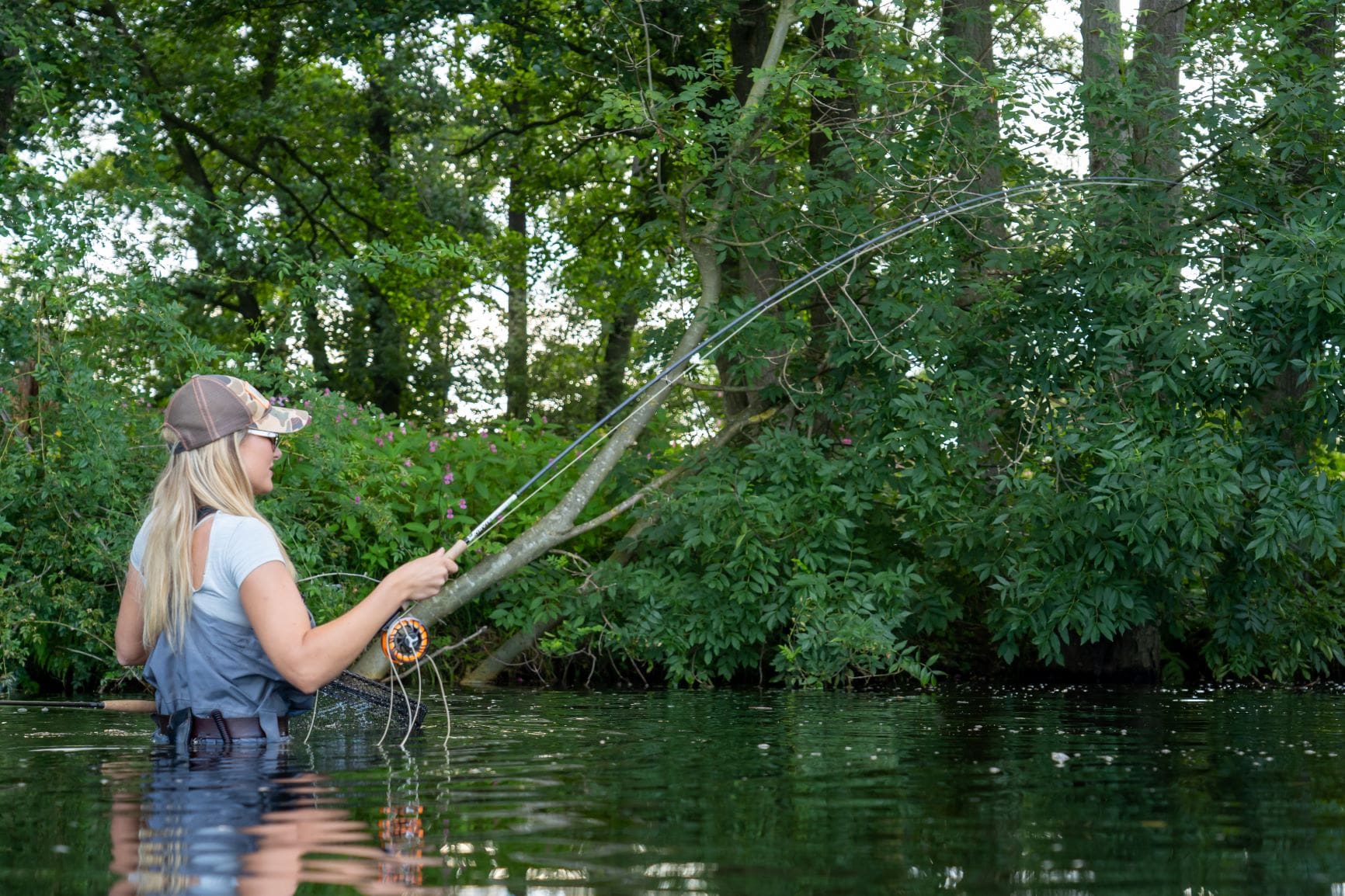

Wader Construction
Wader material can be grouped into two categories, breathable and non-breathable. Insulated waders are usually made from neoprene. Neoprene is waterproof, stretchy and durable, making it perfect for waders, however, it can get very warm as any perspiration is trapped inside. Thicker Neoprene of 7mm or more can also be buoyant, making your life difficult in deeper, fast-flowing water.
Breathable waders are naturally lighter and will obviously allow moisture to escape, hence the name. Common materials include nylon and polyester topped with a hydrophobic membrane such as Gore-Tex.
Breathability is just as important as water-tightness and breathable chest waders are designed to keep you dry from the inside as well as from the out, which is perfect for the angler who wants to be prepared to take the plunge at any moment.
For the angler who is simply going to be pulling up their neoprene waders for a quick dip, breathability might not be such an important factor and a pair of simple waist waders will more than get the job done.
Unlike Neoprene waders, uninsulated waders do not become buoyant and as a result, are preferred for situations when you find yourself in deeper water.
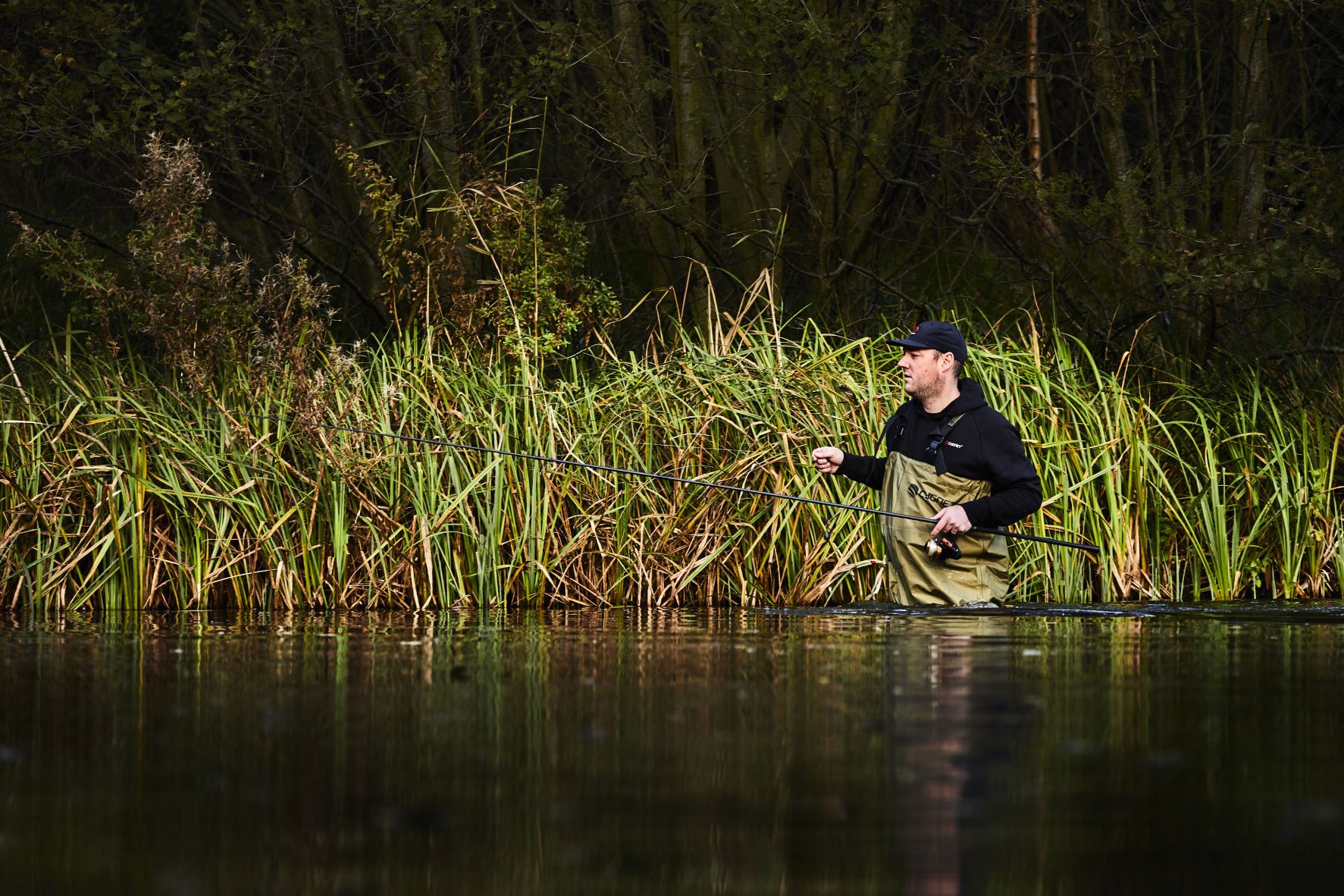

What is the Best Material for Waders?
Neoprene is a material most often used in the aquatic sports industry to make water-tight scuba suits, so you can be confident that a pair of neoprene chest waders will keep you warm and dry for hours whilst you’re standing in the water fly fishing.
A pair of thigh waders could be the difference between a personal best capture and a devastating hook pull when your carp starts to kite towards a lethal snaggy patch in your syndicate water.
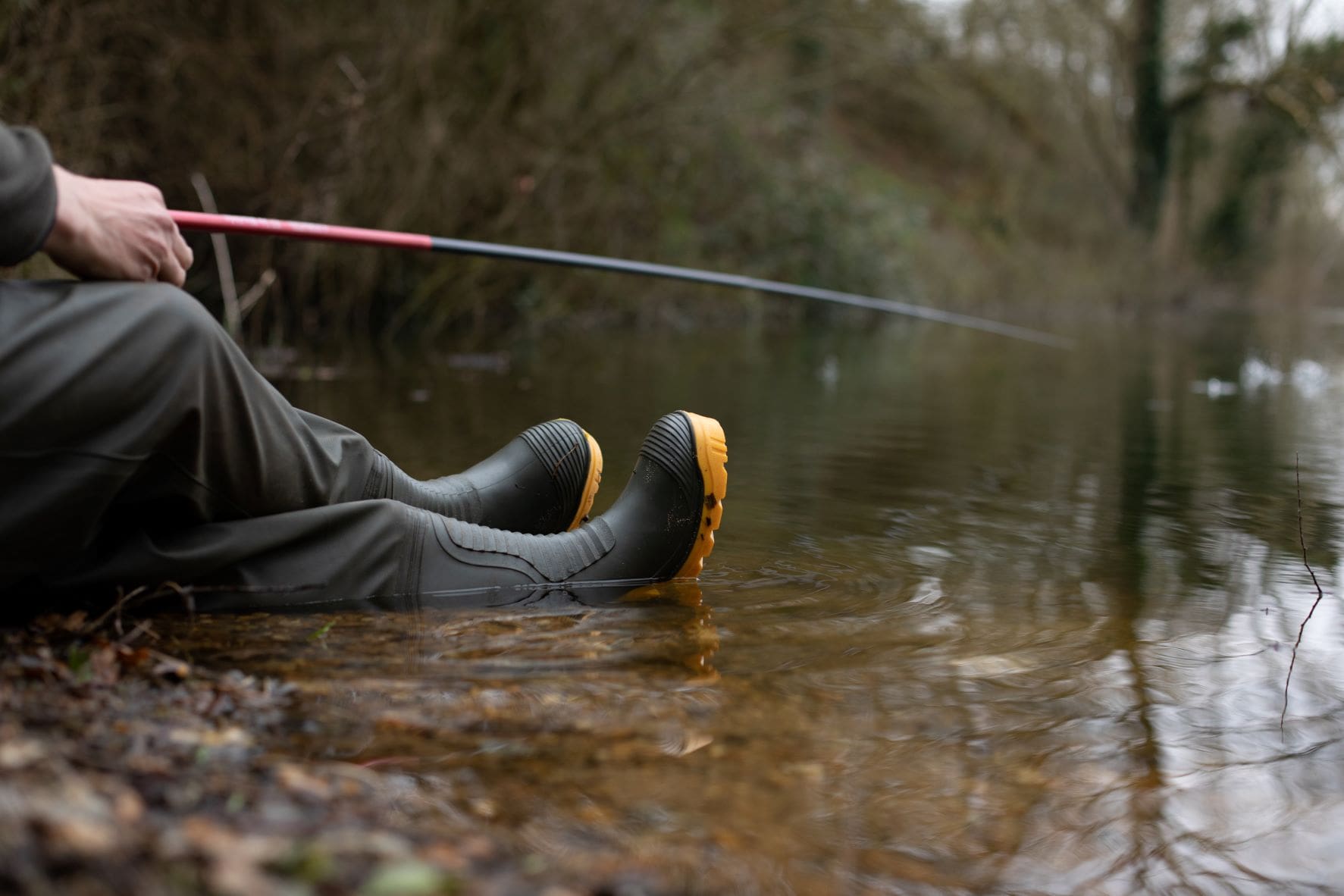

Wader Soles
The soles of your waders are more important than you would imagine, there are four main types of soles; felt, rubber, hiking and studded. Felt soles are best for traversing rock-covered riverbeds, offering superb traction in these conditions. However, felt soles are not as common as rubber soles and may need to be purchased as a separate boot.
Rubber soles are the easiest to clean and best for wading through boggy mud, but they could let you down on a slippery rock surface. Hiking soles are, as the name suggests, for anglers who cover a lot of ground whilst fishing. Being designed for long-distance they are also the most comfortable sole to wear with your waders.
Studded soles offer superior traction on algae-covered rock beds, for situations where a regular felt sole is not quite enough, studs offer greater stability, but cannot be trusted in mud. It is also worth noting the studded soles will damage the deck of your boat if you like to fish from one.
How to Improve Your Waders for Fishing
Wader Belts: If you do manage to tip your waders, a wader belt will ensure that only the torso section of your waders becomes inundated with water.
Gravel Guards: Essentially sleeve on the ankle cuff of your waders, preventing gravel and dirt from entering your wading boots.
Pockets: Welded storage pockets help keep key items on hand and protect them from water. Handwarmer pockets do exactly what they say on the tin.
Cordlocks: Like belt loops, the cord lock helps to ensure the waders are a snug fit for you.
Reinforced Knees: Further material on the knee increases the longevity of your waders.
We’ve got a collection of waders from the world’s leading manufacturers to make it as easy as possible for you to make the right choice. We stock dozens of lines covering every imaginable need, budget, and fishing style across the board, allowing you to take home the right tools at the right price. There are several manufacturers that produce waders, from Vass whose waders are instantly recognisable thanks to the notorious bright yellow suspenders. Daiwa - Yes, they seem to be good at everything - offer waders in all styles, the Daiwa chest waders offer Neoprene legs and a breathable torso material. Other big wader brands include Trakker, Fox, Leeda and Shakespeare.
What Size Waders Should I Buy?
All products come complete with extensive manufacturers’ guarantees and our own seal of approval. If you need a pair of fishing shoes and are unsure of what size will best fit, you can find wading boots for sale in our stores to try on. All the products we sell are supported by our excellent customer services team.
Want to know MORE about Angling Waders?
The AD team are happy to assist at any stage of your order, and you can find all our contact details on our dedicated web page. Keep a close eye on our fishing tackle ranges to see what’s new, or check out our special offers from time to time for the biggest savings of all.
